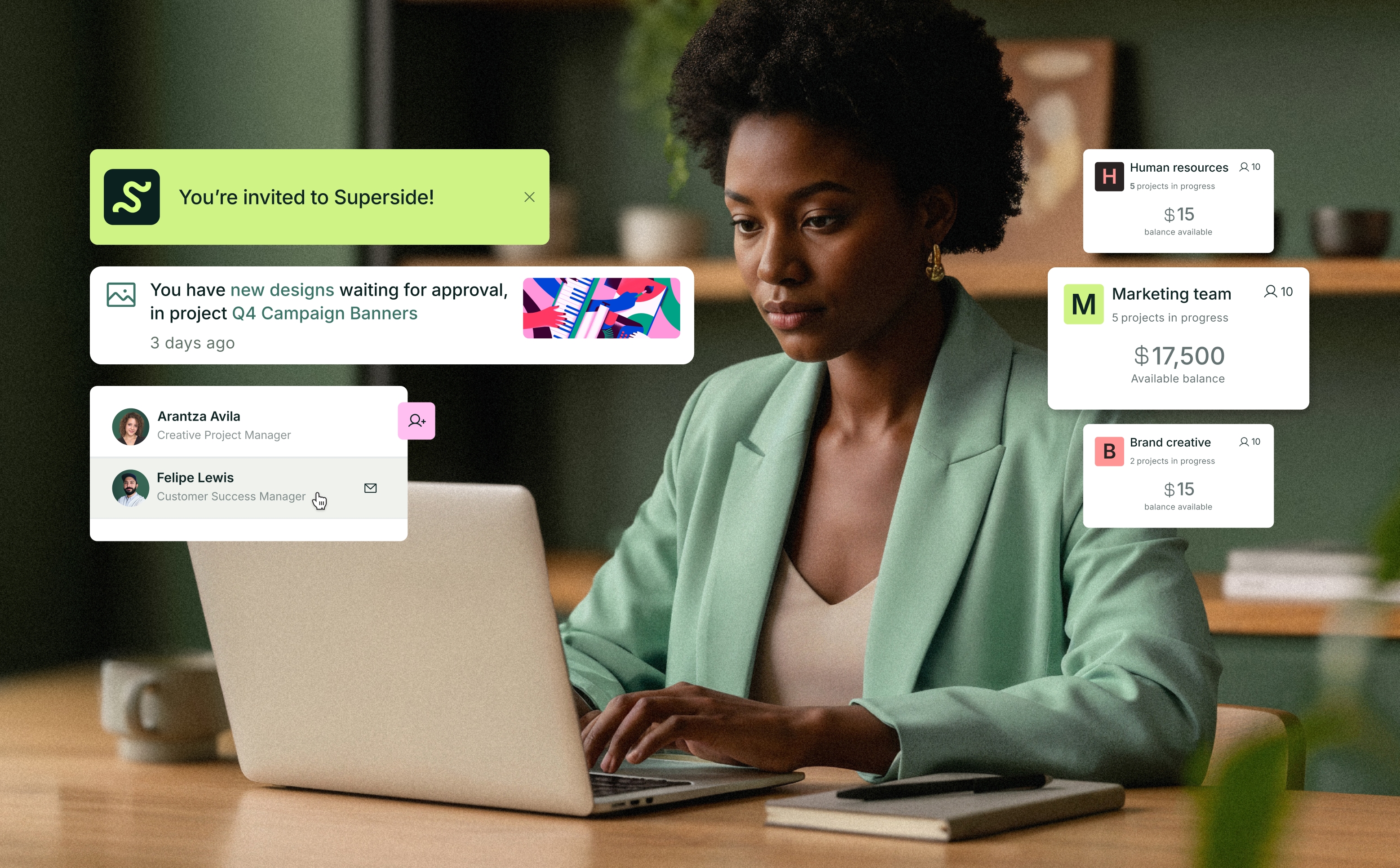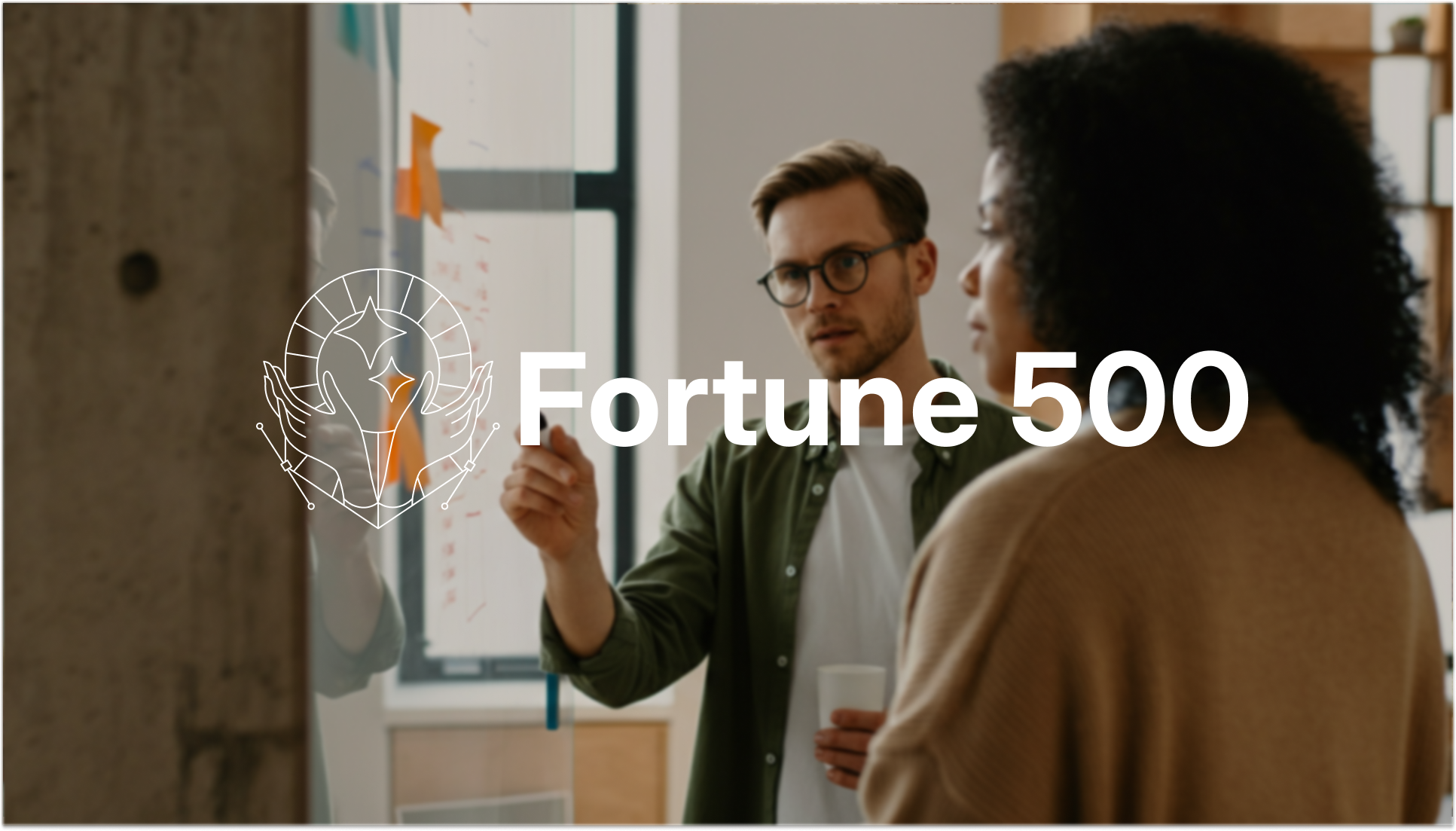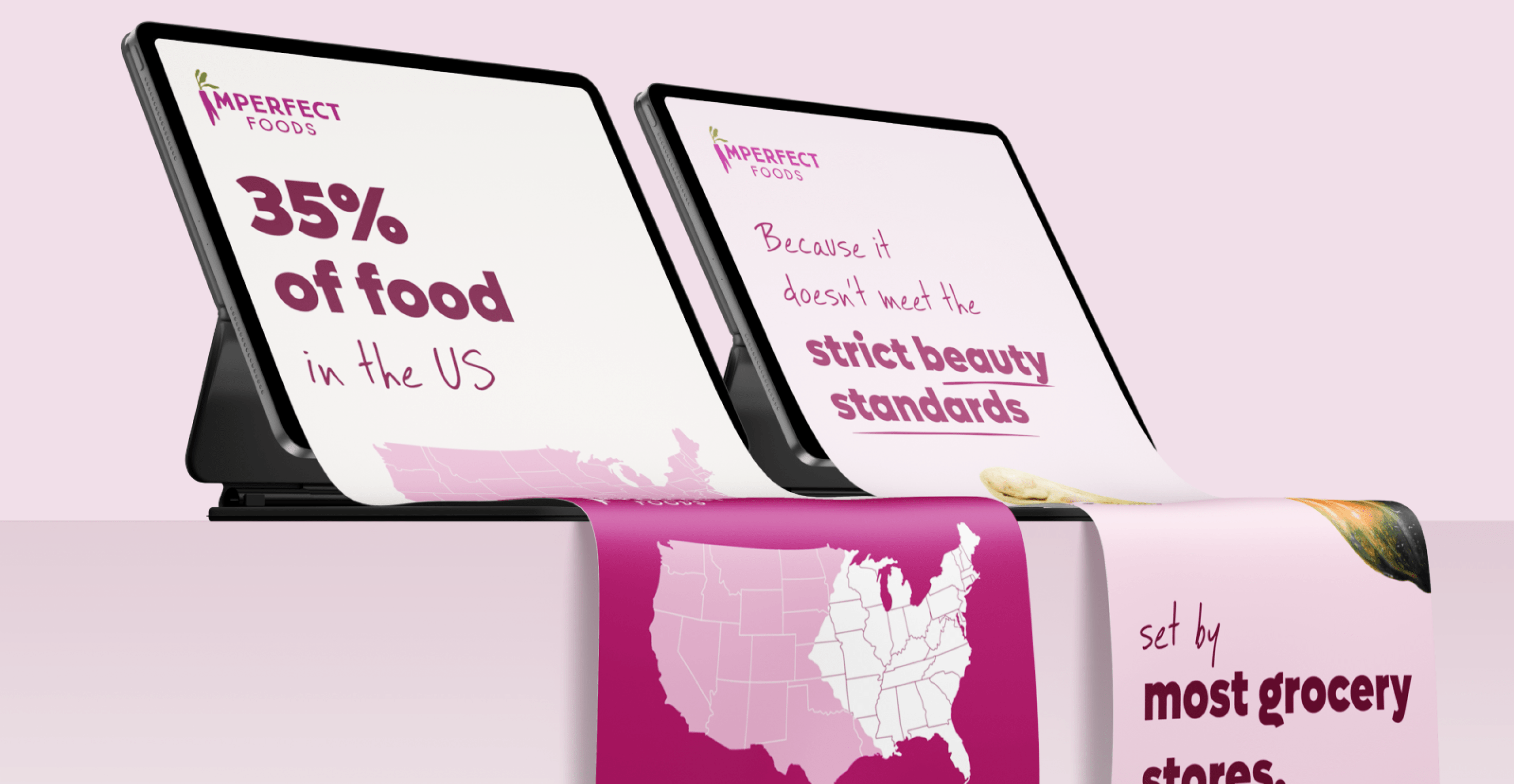
Particularly for small and medium-sized businesses, it’s probably not affordable or efficient to employ their own in-house design team. Even partnering with a design agency may be prohibitively expensive. That’s why many companies are looking to tap into the design talent available in the freelancer community.
However, trying to engage a freelance designer directly can be hit-or-miss. Some compare it to online dating: you pick a prospective partner based on a limited description and then just hope it’s a good match. That can mean losing time and money (often a lot more than the cost of dinner for two) on doomed 'relationships.'
One solution that has emerged to try to reduce those risks is the design marketplace.
At their broadest, design marketplaces are simply platforms that connect clients with designers. Different marketplaces have slightly different offers and business models, but most primarily use “design contests” to make that connection: a business posts details of what it wants designed – be it a logo, brand identity or promotional material – in response to which the freelance designers on the platform submit their proposed designs. The business then picks its favorite from those submitted, and the winning designer gets paid a pre-set price (while the client gets the copyright of the design).
But do such marketplaces really solve the challenges businesses face in using agencies or approaching freelancers directly? Do they offer true value for money? And if not, is there another, better way?
In this post, we’ll take a look at some of the pros and cons of design marketplaces for businesses (how well they serve designers’ interests is a quite separate discussion) and run the rule over some of the more popular services available.
The Pros and Cons of Design Marketplaces
The Upsides
- Choice and variety – A primary reason why businesses are drawn to marketplaces is because, in response to simple specifications about their business, they can get back dozens (sometimes even 100+) of different designs to choose from.
What’s more, as those designs will come from multiple designers, the business also benefits from different designers’ personal styles and interpretations of the brief (Some savvy businesses even use marketplaces as a ‘testing ground’, getting lots of ideas and then instructing a professional agency).
And because designers aren’t obliged to submit a design those designs that are submitted should, in principle at least, come from designers who are genuinely engaged by the brief. - Price – Particularly for small businesses, marketplaces provide a more affordable alternative to, say, engaging an agency. They typically offer a simple, fixed price which (again, in principle,) should mean no nasty surprises further down the line.
If the business doesn’t like a particular design, it did not cost them anything. And many marketplaces offer refunds if clients aren’t happy with any of the submissions they get. - Peace of mind – As well as money back guarantees, marketplaces typically offer certain levels of protection as well. All designers, before joining a contest, would have agreed to comply with any confidentiality duties, and that the business will own the copyright in any winning design.
- Speed – Marketplaces are a good way to get lots of ideas in a hurry. Within 24 hours, a contest could have received dozens of submissions, and with designers often located all over the world, designs can be submitted any time, day or night. So if it’s just about getting lots of design ideas and getting them fast, marketplaces may be worth a look.
The Downsides
- Too much of a good thing?– There is such a thing as too much choice. Particularly for businesses unfamiliar with branding, or without a fully-defined sense of what they are looking for, receiving hundreds of designs can be overwhelming. It takes time simply to review, let alone choose between or think how you’d improve, all those (often very similar looking) designs.
- The Legwork. This highlights another, bigger downside of marketplaces: that they can shift much of the burden to the customer. That’s true both for defining their requirements in the first place (which can be difficult for businesses that don’t speak fluent ‘design’) and for quality control over the final product.
That burden can increase when a business’ creative need has more than one element. Some businesses will simply want a new logo, and nothing else, but most real-world design requirements don’t involve just one such defined task. Rather, they might involve say writing copy, or producing a website, as well as designing a brand. As a design contest typically only covers one element, the business will have to spend time and money seeking out freelancers for the other elements separately. - Hidden Costs – While most design marketplaces offer a clear (and often low) fixed price, costs can soon add up. Some of the services advertised may only be available on more expensive higher-tier packages, or there may be further charges at later stages of the process, that can come as a nasty surprise to any business that hasn’t read the small print.
- Quality Concerns – The principal concern raised about design contest however, is a quality one, and it’s something that stems from the business model itself, rather than any given provider.
Think about it. Designers only get paid if their design wins, and they could be competing against hundreds of other designers. The risk therefore is that, given the low chance of being paid, designers are unwilling to invest a lot of time in their design, meaning an inferior end product (or at worst – mere copies of existing designs). In those circumstances, a contest may end up being no more productive than buying a super-low cost, off-the-shelf design from a ‘logo shop’ or similar.
The contest payment model also means that top designers would actually tend to avoid such contests, while others use marketplaces primarily as ‘training grounds’, a way to experiment with different ideas and build experience early in their careers.
Finally, there is limited opportunity for the business to engage with designers before receiving initial designs, meaning little scope for brainstorming ideas or discuss the business’ brand values as would typically be possible on a more 1:1 basis. Unless the brief is very clear, a business may also end up with lots of ideas back that are way off the mark – even though it doesn’t have to pay for them, added together, there’s still a significant time cost simply in reviewing and rejecting them.
As we mentioned, some marketplaces do offer also offer non-contest services, typically involving a more direct relationship with a particular individual. You won’t get the different perspectives and interpretations that you would get from a design contest, and you may pay a bit more and put in more effort up front. But it does mean a greater chance to engage directly with designers, and may mean you end up with a higher quality product.
10 of the Most Popular Design Marketplaces
With new design platforms springing up at a rapid rate, it can be difficult to work out what they all offer, at what price, and which, if any, would work for you. So we’ve run the rule over some of the more popular platforms around.
99designs offers over 90 different design categories, and is reported to have over a million designers on its books, meaning it’s certainly one of the bigger marketplaces around. Pricing for a logo design ranges from US $299 – US $1299 depending on the package tier, making it more expensive than some. 99designs’ core product is its design contests, but they also offer one-to-one projects with select designers. For the full low-down on 99designs, read our mystery shopper review.
Designhill offers various services (including a subscription graphic design option), but is best known for its design contents. Prices for a logo start at US $199 for “Fast Track,” up to US $999 for its Premium offering. The quality of designer that your project is offered to varies by price level, and some of the cheaper solutions also have a limit on the designs each designer can submit.
DesignCrowd purports to have 700,000 freelance designers on its platform, and promises from 25 to 100+ submissions for each project. There are over 70 different design categories available. Unlike many other marketplaces, businesses can set their own price, but all projects are subject to a non-refundable posting fee of up to US $129 and a 4% transaction fee.
Hire The World’s “Budget” contest package is US $269, and it promises 40+ submissions in return, along with a “Design Jury” feature allowing businesses to run polls for their colleagues or customers to see which design they like best. To guarantee their contest is only open to professional or “elite” designers, though, businesses need to opt for the more expensive packages. Hire The World is currently revamping its website, but they can be contacted directly by phone.
Crowdspring may have fewer designers on its platform than some others, but – with over 200,000 from 195 countries – there’s still plenty. It also offers award-winning customer service, including live chat, email and phone support, and – as many others – a money back guarantee. A basic logo design contest costs US $299, while the ‘platinum’ logo service is a hefty US $1199.
Hatchwise’s logo contest prices start at US $150 (plus a US $39 listing fee). As with many competitors’ sites, there are several upgrade options, including a $35 “Fast Track” upgrade, which runs a contest for only 48 hours and claims to result in more designs than a normal ten-day contest. In an effort to combat plagiarism and keep the playing field level, Hatchwise also features an innovative, user run "Design Court," with repeat offenders automatically expelled from the platform.
Logo Arena promises 50 to 200+ design entries from dozens of “handpicked” designers for each of its logo contests. A basic logo package costs US $249, and customers unhappy with what comes back, get either a 100% refund (if they get fewer than 35 submissions) or a 50% refund (if they get over 35). Higher tiers, which range up to US $499, guarantee a higher number of submissions.
48hourslogo was launched in 2010, and markets itself on the basis of being simple and affordable. A logo contest costs US $29 to list, and businesses can set their own prize value for the winning design (from US $99 up). In line with the ‘simplicity first’ approach, it has fewer upgrade options than others, but claims to have an average 4.9 out of 5 overall rating from over 16,000 customer reviews.
DesignBro, unlike many competitors, doesn’t promise hundreds of design ideas. In fact, a US $199 basic logo package only gets you three designs, and even the top US $479 package returns only ten. Instead, DesignBro markets itself on the quality of its designers, saying it assesses all potential designers’ portfolios for quality and originality and hires only the best five percent. Additionally, in an effort to ensure originality of designs, DesignBro prevents its designers seeing each other’s work.
LogoTournament, like many others, offers a range of fixed price tiers, and a money back guarantee if you don’t receive a sufficient number of submissions (in this case 30). A budget logo package promising around 50 designs costs US $275, while the top “Epic” tier offers 100+ designs for US $875. LogoTournament says it handpicks its designers based on quality, originality, and knowledge, and requires them to pass an initial try-out period.
1 Price is for a basic logo design contest, without optional add-ons/upgrades
2 Contest are generally terminable early, if a winning design is found before the contest ends. Time shown is time from contest opening to winner selection.
The Verdict
Ultimately, whether a marketplace is right for you – and if so which one – will likely depend on which drivers – whether it’s speed, cost or quality – are the most important to you.
Certainly, for some businesses, a design contest can be an effective, low-cost way of getting a new logo or branded materials, particularly if they have a very clear idea of what they want. But inevitably, there are trade-offs, in particular stemming from the fact that, in contests, each designer knows they only have a small chance of getting paid for their work. The effect of that on the quality of both designers and the designs they produce can’t be discounted.
Is there another way? Can you get the simplicity and cost-effectiveness of a marketplace, with the quality and bespoke client focus of an agency?
At Superside, we believe you can. Just complete a simple form, and within 30 minutes a project manager will deliver a quote and hand-pick a team of Superside’s vetted, battle-tested specialists to meet your creative needs – from presentations and web design to logos and visual identity design.












